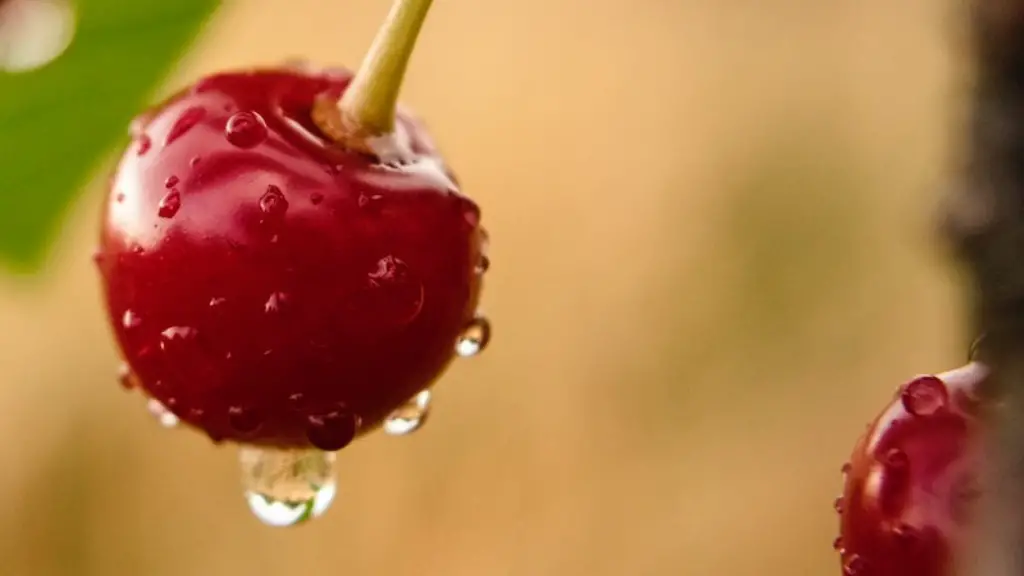A beautiful cherry blossom tree is a sight of joy and a sure-fire way to brighten up any corner of your garden or home. From the stunning array of colors and shapes the tree can produce to the sheer elegance of the blossoms, a cherry tree is an ideal choice for gardeners and homeowners who want a tree that stands out. But what are the best places to grow a cherry blossom, and are there any special considerations for care and maintenance? In this article, we take a look at what you need to grow a cherry blossom tree successfully.
The first thing to keep in mind when planting a cherry blossom tree is that these trees thrive in full sun. They’ll also survive in part shade, but for maximum blooms, pick a space that is exposed to several hours of direct sunlight each day. When planting, you should also make sure you check the pH levels of the soil – cherry blossom trees prefer soil that is slightly acidic, so you may need to add lime or sulfur to adjust the pH if it’s too alkaline.
As far as water is concerned, cherry blossom trees need moist soil, but not too much – they prefer well-drained soil, so it’s important to avoid over-watering. Experts recommend you water only when the soil is dry to the touch – and it’s important to be aware that cherry blossom trees are particularly susceptible to frost, so you should cover or spray the blossoms when temperatures drop below freezing to protect them.
In terms of ideal locations to grow a cherry blossom tree, the warmer climates of the southern United States are generally the most suitable. If you are living in a colder climate, you’ll need to make sure your tree is located in a sheltered spot, such as against the side of a house, or in the corner of a garden that is protected from the wind. It’s also worth noting that cherry blossom trees can take several years to reach their mature height – some varieties can reach up to 15 feet – so you need to make sure you give them plenty of space to grow.
The beauty of cherry blossom trees is undeniable, and if you’re planning on planting one in your garden, it’s worth noting that the key to keeping it looking its best is regular pruning. Pruning helps to maintain the tree’s shape, while also encouraging the production of new blooms. Experts recommend pruning in early autumn, when the tree is still actively growing and producing new shoots. Pruned branches can then be used to propagate new trees for your garden.
When it comes to caring for a cherry blossom tree, regular maintenance is essential in order to keep the tree healthy and to promote blooms. It’s important to feed your tree in spring and summer, and to mulch around the base of the tree to keep the soil moist and healthy. And, as with all trees, it’s important to regularly check for signs of pests and diseases – the sooner you identify any problems, the easier it is to treat them.
When to plant
When planning to plant a cherry blossom tree, it’s important to get the timing right. Generally, it’s best to plant in spring and early summer, when the risk of frost is minimal. Planting in autumn is also possible, but you should make sure you pick a variety of cherry blossom tree that is specific to your location and its climate.
While planting your cherry blossom tree, you should also make sure you pick a spot that has plenty of space for the roots to spread out – trees need space to grow and can suffer if planted too close together. And of course, you’ll need to prepare the soil prior to planting by adding organic matter, such as compost and manure, and topping up with a layer of mulch for extra moisture.
When planting, make sure you sink the root ball of the tree into the soil at the same level it was at in the pot to avoid shock. After planting, it’s important to water regularly to encourage healthy root growth. And once your tree is established, you should ensure that you prune annually to encourage blooming and keep it in shape.
Additional requirements
When growing a cherry blossom tree, there are a few additional requirements you should be aware of. For example, the tree should be regularly inspected for signs of disease or pests, and the mulch around the base should be topped up when it starts to breakdown. The tree should also be checked for any damaged or diseased branches, and any dead wood should be removed to encourage healthy growth.
Finally, cherry blossom trees also require regular feeding – experts recommend using a fertilizer specifically formulated for fruit trees in spring and summer. You should also be aware that cherry trees are susceptible to frost damage, so it’s important to cover any new growth or buds before the temperature drops.
Replanting and propagating
Cherry blossom trees can be easily propagated with cuttings, and these cuttings can be used to re-plant a new tree in your garden. As with all plants, it’s important to know how and when to take your cuttings – the best time to take cuttings is in spring and early summer, when the tree is actively growing. Your cuttings should be taken from healthy, disease-free branches and each cutting should be at least 2 inches in length.
To propagate your cherry blossom tree from cuttings, you’ll need to choose a pot or container that’s large enough for its root structure, as well as a well-draining potting mix. Place your cuttings in the pot, making sure that the leaves are not touching the soil, and cover the pot with a plastic bag. This will help to retain moisture and encourage the roots to form. Once the roots have formed, your new cherry blossom tree is ready to be planted in its permanent location.
Choosing a cherry blossom tree
There are many varieties of cherry blossom trees available, so it’s important to pick the right one for your garden. For example, some varieties, such as the pink flowering Yoshino cherry tree, are particularly suited to warmer climates, while others, such as the white flowering Weeping Higan cherry tree, are more suited to colder climates. When choosing a cherry blossom tree, it’s important to consider the climate and the size of your garden.
Cherry blossom trees also come in a range of shapes and sizes, and it’s important to choose one that will fit in with the size and style of your garden. If you have a large garden, you may want to go for a larger, more upright variety, such as the Japanese Flowering Cherry Tree. If your garden is smaller, you might prefer a smaller, more compact variety, such as the Kwanzan Cherry Tree. It’s important to think about what type of tree you want, before you make your purchase.
Caring for a cherry blossom tree
Caring for a cherry blossom tree is relatively easy, and with a little attention, you can keep your tree looking its best. As mentioned earlier, cherry blossom trees need regular pruning to keep them in shape and to encourage blooming. Regular feeding is also important – experts recommend using a specifically formulated fertilizer for fruit trees in spring and summer. Watering should also be done on a regular basis – cherry trees thrive in moist soil, but not overly wet conditions.
Finally, it’s important to keep an eye out for signs of pests and diseases – cherry blossom trees can be susceptible to pests such as aphids and caterpillars, as well as fungal diseases such as leaf spot and powdery mildew. If you spot any signs of pests or disease, it’s important to act quickly to treat them before they spread and cause damage to your tree. If your cherry blossom tree is looking healthy, then with a little care, it will produce blooms each year that will bring beauty and joy to your garden.




